Subscribe to the Newsletter
Your cart is empty
Shop now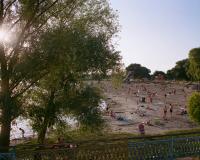

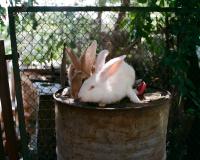
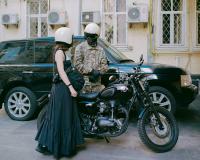

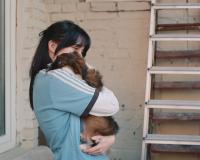

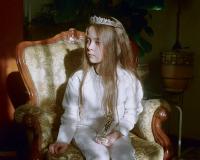
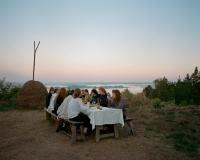

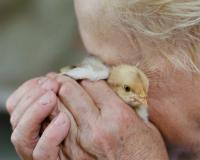
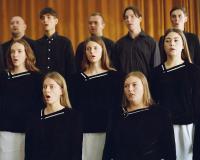
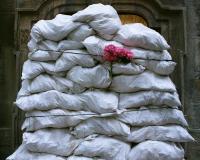

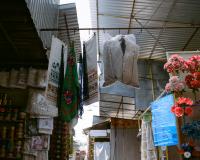















Der Greif X MPB: Behind the Image with Anya Tsaruk
Der Greif in partnership with MPB presents Anya Tsaruk, Guest Room Scholarship winner
Der Greif and MPB introduce Anya Tsaruk, scholarship recipient from our Guest Room “Echoes of Truth", curated by Martin Morgenstern, Sandra Buschow & Christina Töpfer. Tsaruk is a Ukrainian photographer based in Berlin, whose work delves into themes of identity, trauma, migration, and community, particularly in the context of the Russian invasion of Ukraine. Her project “I Hope Your Family Is Safe” featured in “Echoes of Truth” Guest Room, is a deeply personal visual response to the Russian invasion of Ukraine. The project navigates the liminal space between personal grief and global crisis. Tsaruk juxtaposes scenes of domestic fragility with wartime landscapes, tracing the emotional dissonance of living in exile while loved ones remain in danger.
This format is brought to you in partnership with MPB, Europe’s top camera reseller.
Der Greif: Can you tell us the story behind your work selected for Guest Room?
Anya Tsaruk: "I Hope Your Family is Safe" is a project about my loved ones living in Ukraine, inspired by the well-meaning but unsettling phrase often said to me by foreigners. The work explores the layered and uncertain meaning of ‘safety’ in a country shaped by war. Through a tender and intimate visual approach, the project challenges mainstream representations of contemporary Ukraine, offering instead a narrative grounded in love, hope, and resilience. I aim to evoke empathy for Ukrainians – not through pity, but through a recognition of our shared human experiences.
DG: Can you expand on the themes that your photographic work explores specifically?
AT: I create documentary work from a deeply personal perspective. My photographs center on the experiences of my family, my friends, and myself, while also engaging with the broader political and social realities that shape our lives. Through photography, I hope to contribute to the evolving mosaic of Ukrainian identity – offering my own vision of Ukraine, one that reflects my people's bravery, vulnerability, defiance, and enduring desire for freedom.
DG: What is the biggest challenge you have faced in photography?
AT: My photographic journey began with the full-scale Russian invasion of Ukraine and remains deeply rooted in the ongoing war. I've withdrawn from events featuring uncritical projects made in or about Russia, as many photography institutions continue to view art as apolitical – dismissing Ukrainian voices as "too emotional" for challenging this stance. More troubling are cases like World Press Photo 2025 awarding a photographer employed by a Russian propaganda outlet who called the occupation of Mariupol a ‘liberation.’ Georgian photographers were overlooked while he was awarded for covering anti-Russian protests in Georgia. The organization also paired two single images – one of a traumatized Ukrainian child, the other portraying a Russian soldier as Jesus – creating a disturbing false equivalence between victim and aggressor. In a time of rising far-right ideologies and growing international pressure for Ukraine to compromise, we must acknowledge photography’s responsibility and the power it holds in shaping public consciousness.
DG: Who are some photographers who inspire your work?
AT: The projects that come to mind are Abdulhamid Kircher's "Rotting from Within" and his approach to working with family histories, as well as Alexandra Rose Howland’s fundamental work on Iraq, "Leave and Let Us Go". There are many inspiring Ukrainian photographers, like Daria Svertilova, Lesha Berezovskiy, Vic Bakin whose work I admire. For my current project, I draw much inspiration from the instagram stories of my friends in Ukraine, capturing their everyday lives.
DG: What are you working on right now?
AT: I am continuing my work on the project "I Hope Your Family Is Safe". Once I feel that the story is complete, I aim to turn it into a photobook.
DG: What kind of gear do you work with?
AT: The camera I used to start shooting "I Hope Your Family Is Safe" belonged to my friend. It was a Mamiya 645, and I immediately fell in love with the medium format. Later, I got myself a Mamiya 645 Super.
DG: What was the first camera you ever used?
AT: My fascination with photography began one Christmas when my grandpa gifted me his old film cameras. Later, I was given a Canon FTb by family friends – it had been sitting in their attic for years. With that camera, I shot my first major project, “Mother Land,” before eventually transitioning to medium format.
DG: What do you value in your camera gear today? Any thoughts on used gear?
AT: I love my medium format film camera for its slowness – the way it makes me pause and carefully compose each frame, the limitation on how many shots I can take, and the fact that it stays at waist level, never covering my eyes. Often, the time it takes to create a portrait allows emotions to surface – ones that remain hidden at first glance.
DG: Can you tell us what this scholarship means for you?
AT: The scholarship gives me the opportunity to continue my work in Ukraine, with my next trip planned for late spring to early summer. I’m deeply honored to have received this scholarship and to be able to share my vision – my truth – about the war in my homeland, which is so often represented from an outside perspective.
In partnership with our Guest Room partner